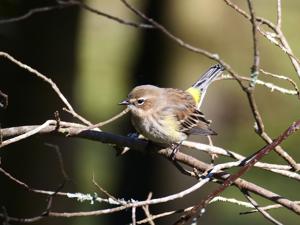
One of my favorite childhood books was “Robinson Crusoe,” the famous castaway tale by Daniel Defoe that first appeared in 1719. What first got my attention was the story’s locale, a tropical island that seemed very much like my south Louisiana summers.
I was also thrilled by Defoe’s sense of how quickly life can change. Within hours, his Crusoe goes from the domestic drudgery of a creaky ship to exotic exile in a jungle wilderness — all because of a shift in the weather.
Defoe’s genius for drama came from living through turbulent times in his native England, I think, but he might have also grasped the vagaries of existence by watching birds. I developed that theory during the pandemic lockdowns, when many of us tackled new kinds of reading to pass the time. That’s how I came across Defoe’s “A Tour Through the Whole Island of Great Britain,” a big travelogue he wrote not long after “Crusoe.” Defoe wrote at a time when many people spent lifetimes without going beyond their home villages. His reference to “the whole island of Great Britain” tells readers they’re in for an odyssey.
A vivid passage unfolds when Defoe stops by the coastal village of Southwold, where he spots a multitude of swallows, “such an infinite number that they covered the whole roof of the church, and of several houses near, and perhaps … of more houses which I did not see.”
A local tells Defoe that the birds will be on their way, though it seems hard to believe that such a horde is going anywhere quickly. But by the next morning, as Defoe tells it, every swallow is gone.
For me, the departure of goldfinches from this corner of Louisiana each spring feels just as abrupt. I first spot them in my yard around Christmas, and they usually leave shortly after Mardi Gras. They’re mostly olive when they arrive but get yellower as the weather warms. This year’s goldfinches were especially welcome at our place because they arrived during the holiday freeze last December, when everything else in our yard was brown and dull. At one point, they were so plentiful that the lawn seemed to roil with them.
When my wife and I left for a short road trip right after Mardi Gras, I assumed we’d return to find the goldfinches gone. Sure enough, they’d vanished during our absence, like tenants skipping the rent.
I thought I’d spotted a laggard last week, but it turned out to be a yellow-rumped warbler — a little bird, mostly brown and gray, that gets its name from the splotch on its tail that looks like a dollop of mustard. I understand that these warblers will soon leave for other places, too.
All the more reason to pay attention, I guess. I watch the window these spring days as I once read “Crusoe,” eager to learn what will happen next.
Email Danny Heitman at danny@dannyheitman.com.


Leave a Reply